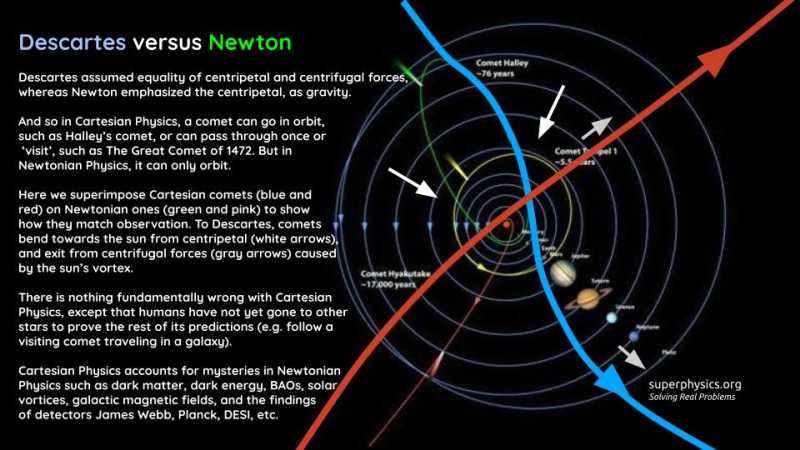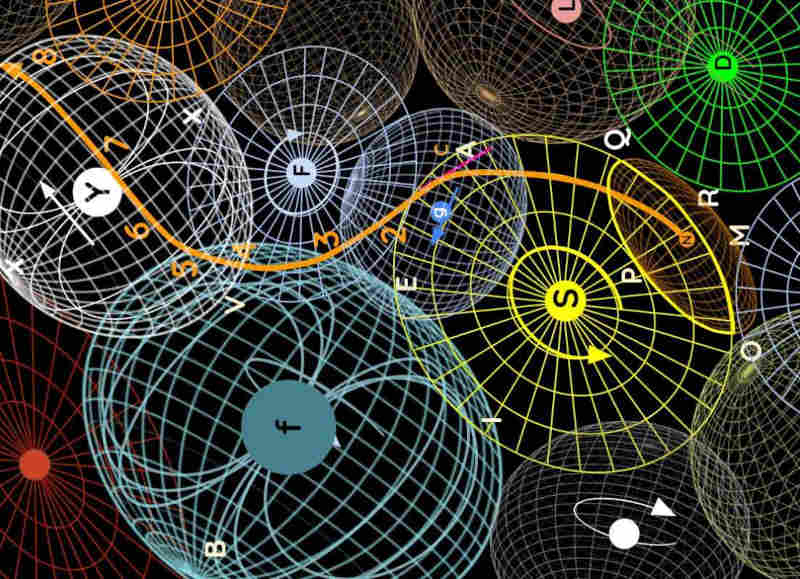Comets and Climate Change
3 minutes • 614 words
Table of contents
Comets are small objects that traverse a stellar system, producing a ’tail’ from ‘outgassing’.
These are opposed to:
- asteroids which are objects that orbit between Mars and Jupiter
- meteors which are objects that break off from those comets and asteroids
In Principia Mathematica, Isaac Newton tried to debunk Descartes’ vortex theory by saying that the eccentricity and irregularity of a comet’s orbit is not accounted for by vortex rotation:
It’s clear that Newton had a deficient understanding of Descartes’ 2nd Element Vortices (qosts to Superphysics) and only knows 3rd Element Vortices (qom to Superphysics which manifests as Newtonian mass). Those latter vortices are the physical masses that are already in our solar system.
Both Cartesian and Newtonian Physics base the eccentricity of a comet’s orbit on the comet’s momentum – there is no disagreement in that regard. We superimpose the 2 beliefs on the orbits of known comets Halley and Hayakutake below.

But somehow, Newton imagines that a Spacetime Vortex (represented by our solar system) will force a comet into a circular orbit and remove its freedom. But that will be the logic of a person who does not know that the comet’s entry momentum into Solar System 1 is dictated by the Solar System 2 where it exited.
How a Comet Traverses Solar Systems
When a comet enters Stellar System S, its momentum comes from the energetic invisible spacetime particles (2nd Element) that goes with it, that came from Solar System 2 that it just exited.

This literally adds mass, spacetime-density, and energy to Solar System 1. Because of the law of conservation of energy, Solar System 1 cannot arbitrarily cancel that added spacetime-density and energy.
And so the comet will either pass through, or create an eccentric orbit in Solar System 1 if its momentum is not able to escape the vortex of that solar system.
But this increases the spacetime-density of the whole solar system 1 in proportion to the comet’s size and momentum. This is a problem because all spacetime in that solar system has to rearrange to accomodate the increase.
Climate Change
This means that planets get an extremely tiny added push since gravity is a push-force from external spacetime.
This added push might be enough to affect a planet’s atmosphere which is the first planetary region affected by the push.
This then might lead to changes in weather or climate while that comet is within the solar system. This is why comets are associated with climate change more than asteroids or meteorites since the latter are not “foreigners” to the solar system.
This is possibly how the Great Comet of 1472 could have contributed to the cold spell from 1430s and how those of 1556 and 1577 caused that of the 1560s. These create cold because 2nd Element spacetime particles are devoid of heat which is from the 1st Element (electromagnetism). We assume this is why cold dark matter is called “cold”.
Newton and Einstein have nothing on invisible spacetime particles and so they are unable to connect any of these phenomena with any single or common principle.






